Tiny toddlers pointing and saying ‘duck’, ‘magpie’ and ‘corella’ and making valiant attempts to pronounce ‘Purple Swamphen’ were the highlight of my week.
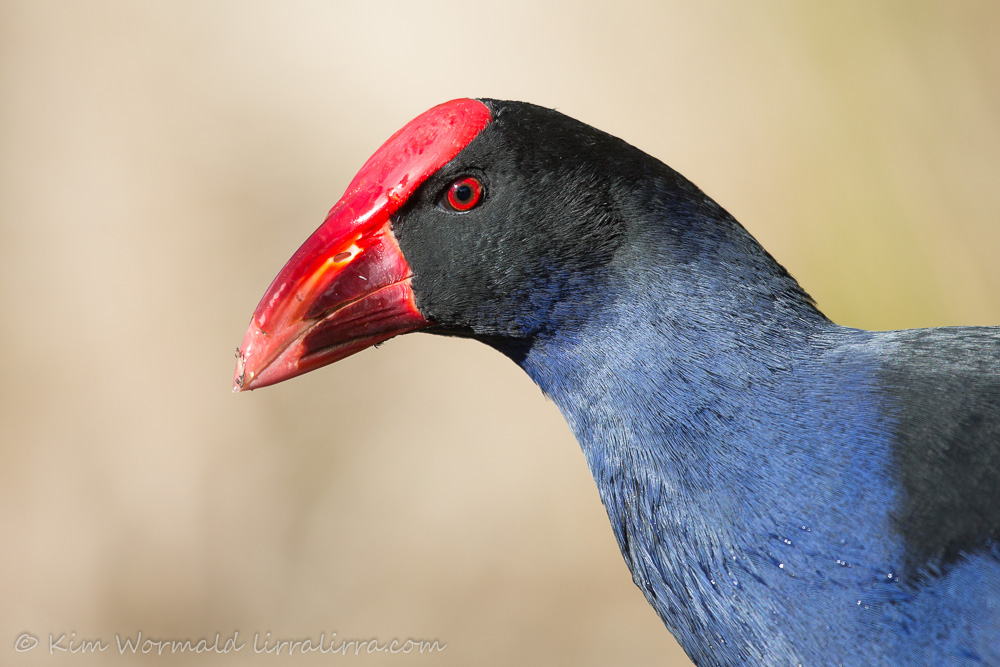 Purple Swamphen (Porphyrio porphyrio)
Purple Swamphen (Porphyrio porphyrio)
Canon 5D Mark III, 100-400mm L IS USM, 1/800, f/5.6, ISO 400, focal length 400
My daughter runs a Parenting by Heart Mummy Meet Up group and asked if I’d lead a birdwalk for the group. We met at a small local park on Wednesday morning, there are a couple of ponds at one end and some play equipment at the other and off we went with babes in arms (and tummies) and tiny hands in ours.
Just a few steps along the path was a Noisy Miner thoughtfully feeding from a grevillea at toddlers’ eye-level. Further on we saw an Australian Magpie collecting nesting material, a pair of Magpie Larks, Australian Wood Ducks, Pacific Black Ducks, Grey Teal, White-faced Heron, Welcome Swallows, Moorhens, Purple Swamphens, a Little Raven, Eastern Rosellas, Sulphur-crested Cockatoos, Common Mynahs and a lovely, noisy flock of about 70 Little Corella that flew over our heads several times as though they knew we needed to see birds that are more obvious than fairywrens.
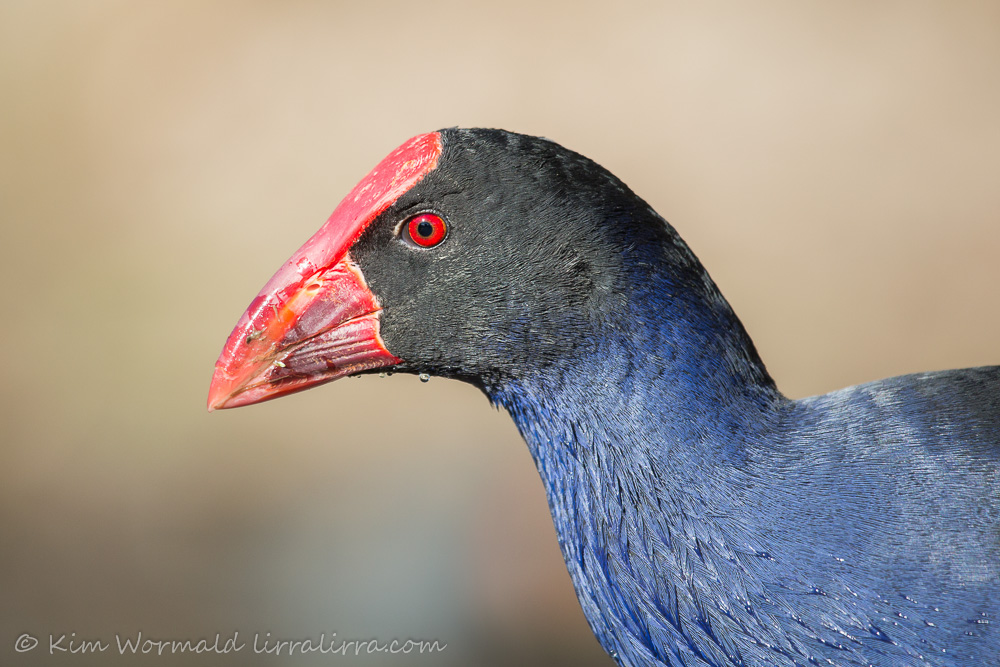 Purple Swamphen (Porphyrio porphyrio)
Purple Swamphen (Porphyrio porphyrio)
Canon 5D Mark III, 100-400mm L IS USM, 1/800, f/5.6, ISO 500, focal length 400
Once the lovely mummas and their littlies had headed for the playground I sat amongst the duck poop to take some portraits of Purple Swamphens with distant dry reeds in the background. The lighting was excellent and enhanced the colours and definition of these striking birds.
I like the eye-contact of the top image but the droplets and chest definition of the portrait above, it would have been nice if they’d been in the same image! Purple Swamphens are large rails, measuring about 46cm. Their bills and frontal shields are bright red and strong. Not many birds have frontal shields and their purpose is not well understood but believed to play a part when choosing a mate and to offer protection when feeding.
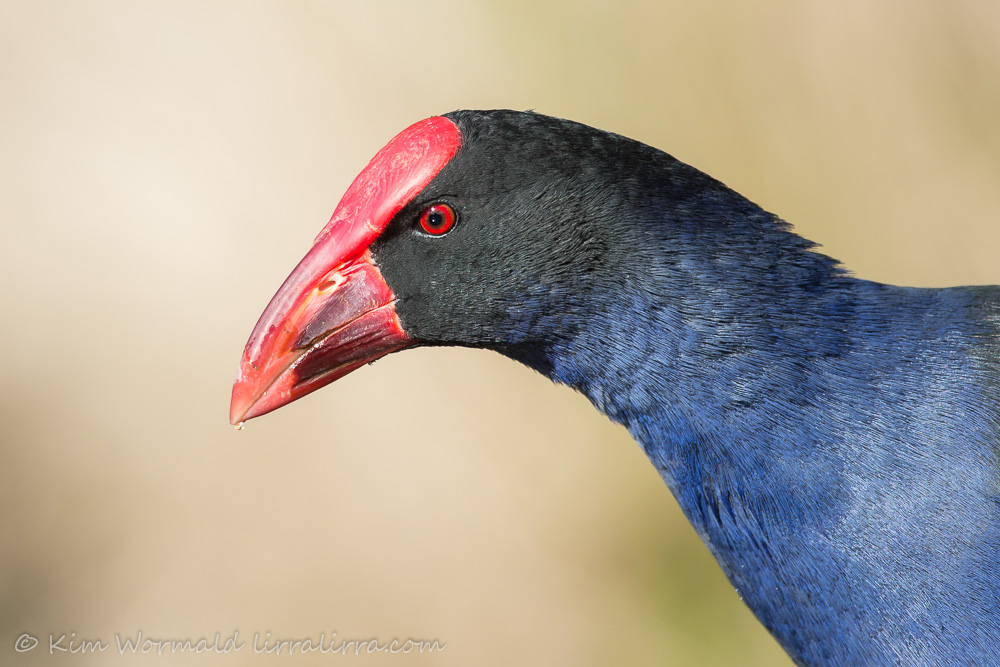 Purple Swamphen (Porphyrio porphyrio)
Purple Swamphen (Porphyrio porphyrio)
Canon 5D Mark III, 100-400mm L IS USM, 1/800, f/5.6, ISO 400, focal length 400
The third portrait has a pleasing head angle and some lovely jagged feathers at the back of the neck. These hens didn’t keep still for a nano-second. The bright red eye of the Purple Swamphen is very intense and hints at items in their diet other than fleshy reeds and rushes. They also eat frogs, snails, eggs and even baby birds, especially tiny ducklings – this didn’t endear them to the walkers (a feeling I totally understand) but they have their babies to feed too.
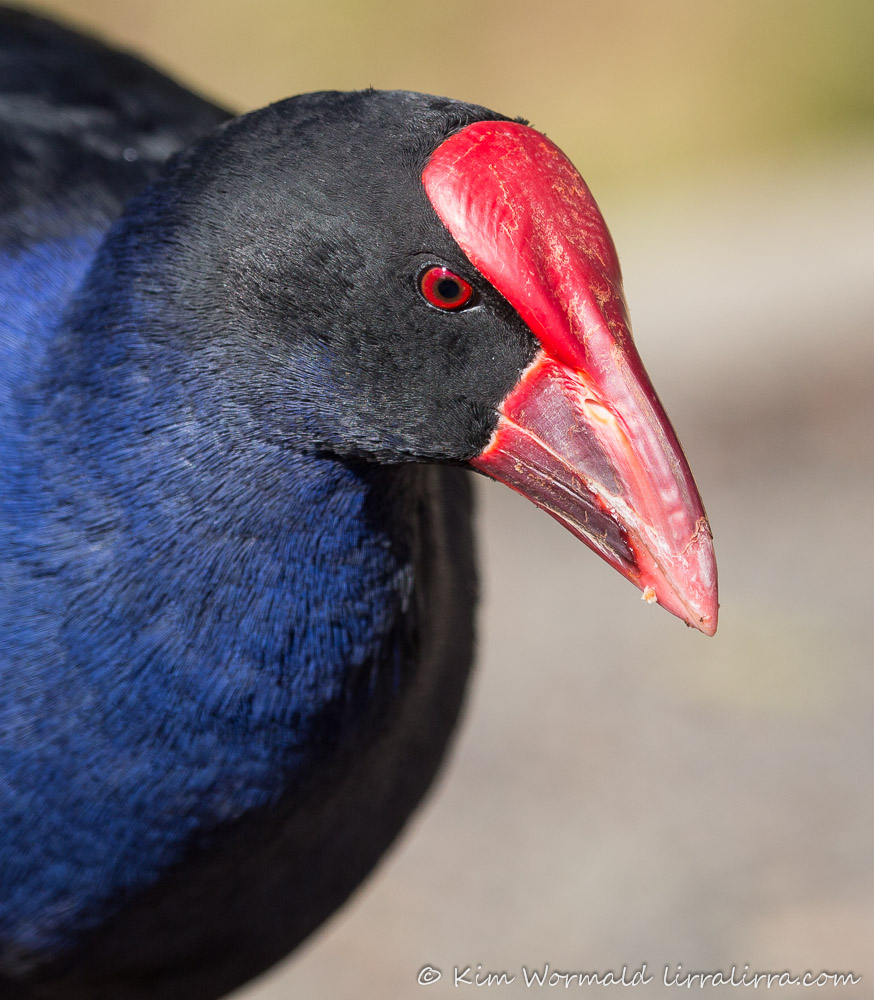 Purple Swamphen (Porphyrio porphyrio)
Purple Swamphen (Porphyrio porphyrio)
Canon 5D Mark III, 100-400mm L IS USM, 1/1000, f/5.6, ISO 400, focal length 250
It’s hard to believe from the vibrance of the bluish purple in these portraits that sometimes the colouring of Purple Swamphens’ underparts is hard to discern. In low light or in shade they can appear predominantly black. Purple Swamphens are common across Australia and you are likely to see them around fresh water wetlands and creeks in most parts of the country.
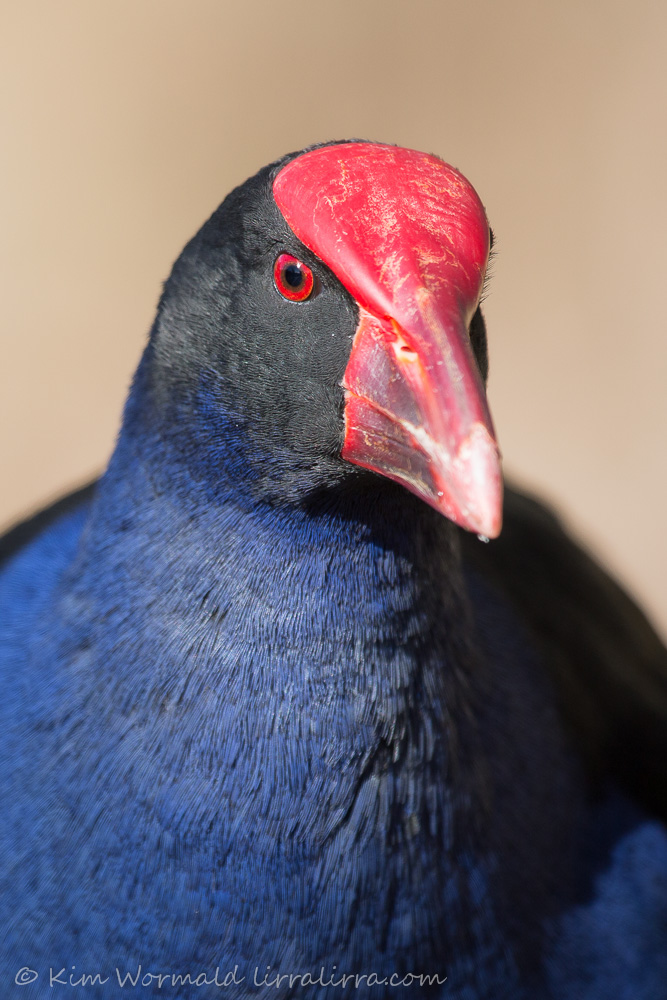 Purple Swamphen (Porphyrio porphyrio)
Purple Swamphen (Porphyrio porphyrio)
Canon 5D Mark III, 100-400mm L IS USM, 1/800, f/5.6, ISO 400, focal length 400
If I’d known the bird above was going to look directly at me I’d have changed the f/stop to get more depth of field – that’s part of the challenge and fun of bird photography, there are no second chances. I’m wondering which of these portraits would be best to enter in photography competitions, if you think a particular one has more impact please let me know.
I hope you get opportunities to share the wonders of nature with a child, it’ll make you both smile.
Happy birding, Kim
~ Thank you for your visit and comments.
~ If you’d like to receive a weekly email informing you that lirralirra has been updated please add your email address to the ‘subscribe’ box above right

Wow, these are gorgeous closeup of your Swamphen! Beautiful bird! Happy weekend to you!
Thanks Eileen, happy weekend to you too
These must be my favourite birds of all time. They look prehistoric and are so focused I can just about see what they’re thinking.
I thought you didn’t like them.
Magic. As always. Thank you.
Thanks EC
Love the second last picture!
Thank you Tam!The look in its eye is very intent.
Hello Kim, I like the third photo too. It is the sharpest and has no distractions, just a very cute droplet of water on its beak.
That 100-400mm sure does a good job.
Carole.
Thanks Carole, I appreciate your thoughts and totally agree re the 100-400mm